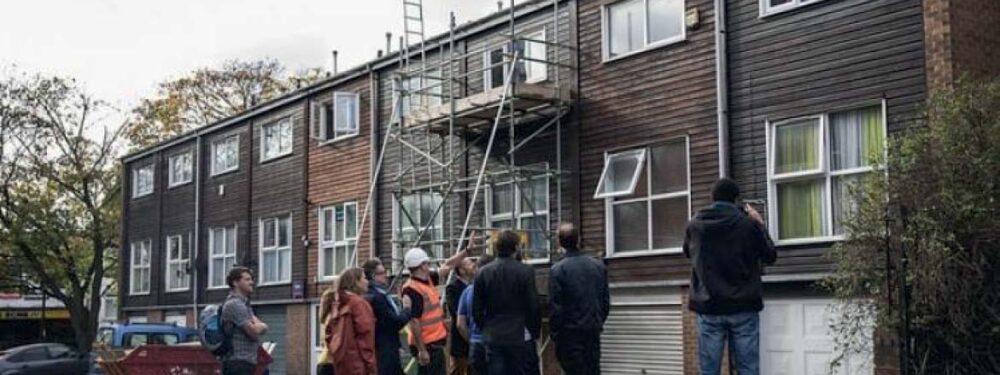
Should we get #retrofitpositive again?
When The Green Deal collapsed in 2015-16, the energy efficiency industry was understanbly upset and angry with constantly changing government policy. However, at the time, I wrote that in order to start doing the right things, you have to stop doing the wrong things first.
That involved three years of reviewing industry practices, endless working groups, government reports and drafting new standards – a glacial process, not helped by Brexit of course. But the industry is now far, far better placed in terms of capability and regulation than it was in the years of retrofit-hype leading up to The Green Deal. It has an opportunity now to embrace new opportunities based on high-quality delivery, with industry standards due for publication this year that will result in far greater consumer confidence.
Based on Ofgem data dating back to 2013, the level of defective projects showing Type 1 fails on retrofit projects was as high as 10%. It was this sort of stark statistic, coupled with a Ministerial mail-bag bulging with complaints from unhappy customers, that alterted the establishment to the size of the problem. The Each Home Counts Review revealed that far too many projects had been unsafe, unsatisfactory and even counter-productive – living conditions in some cases were being made worseby damp, mould and condensation problems. Peter Hansford’s report on the solid wall insulation sector was no less damning. It was no wonder that many industry experts were saying there should be no mass-scale roll- out of retrofit until we’ve worked out how to do it effectively at scale first.
The reasons to be more optimistic now are, however, numerous. Here are just a few of them.
The people who used to be seen as dissedent outsiders are now calling the shots.
For example, Peter Rickaby is now the Technical Author of the soon-to-be published PAS Standards. Russell Smith has secured funding from BEIS to demonstrate that a model for the Able to Pay Market can be made to work using through the Retrofit Works local advocacy/local delivery model. David Kemp is leading an ERDF project in Manchester, working with a number of housing associations. There are many others besides.
The knowledge base is much greater, and the educational tools are now widely available.
Thanks to investment from CITB, a Level 5 Diploma in Retrofit Coordination and Risk Management has been developed which teaches people how to manage deep, large scale retrofit projects. It’s never been done before, and now we no longer have to rely upon people to make it up as they go along. For more information, visit The Retrofit Academy website. Over 70 people have started their qualification over the past few months, and there will consequently be enough skilled people around to enable the transition to begin. Hundreds more will follow.
Projects are beginning to succeed!
Look no further than the Energiesprong projects across the country, where whole terraces are being transformed inside and outside using offsite construction methods. Contractors like Melius and ENGIE have invested heavily in R&D, gearing up for the near-future. Alternatively, take the GLA’s RE:NEW programme that has massively accelerated retrofit in social housing in the capital. The sccess of RE;NEW has led Mayor Sadiq Khan to commit to a world-class energy efficiency programme. Which leads me on to …..
Cities are taking the LEAD
Not just London, but Manchester, Nottingham, Bristol and others are taking leadership positions, committing themselves to energy efficency targets far more ambitious than the government’s national targets. Local authorities and city-administrations will need to be brave and bold, and these major conurbations are doing just that.
We have begun to develop a lexicon that people can relate to
Warmer, healthier, happier, greener, more comfortable, aspirational – these are all words that all householders can relate to. We are beginning to adapt our vocabulary and marketing to put ‘energy efficiency’ on the to-do list for many renovators and home-improvers. We’re even beginning to help small builders realise that this knowledge just makes you a better builder.
It is possible that this momemtum behind quality, deep retrofit could splutter and we could return to the bad old days. Standards may be watered down. Ministers may cave in to lobbyists. There could be political amnesia in the wake of a No Deal Brexit or General Election. None of us has a crystal ball. However, the constrast with 2012, the height of Green Deal-mania, is stark. We are now ready to start delivering, to start delivering well, and to start delivering at increasing scale. Let’s be positive. Let’s kick start the journey towards decarbonising our housing stock, towards eradicating fuel poverty, towards creating new jobs and unleashing the myriad social, environmental and economic benefits that good retrofit should bring. Let’s be #retrofitpositive again!
